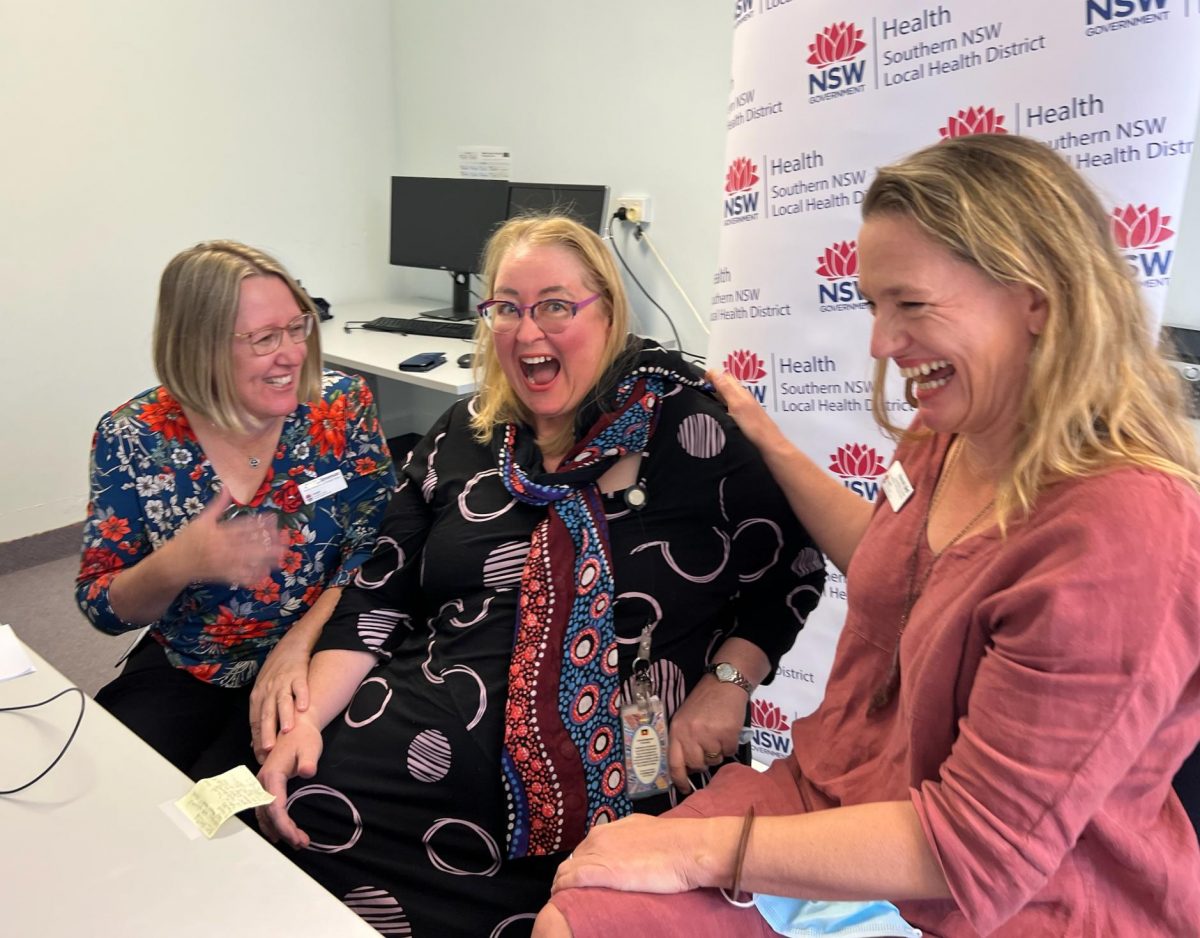
Southern NSW Local Health District’s Claudia Stevenson, Amanda Gear and Hannah Bird were thrilled when their Keeping Pregnant Women Safe and Close to Home program won a state award for patient safety. Photo: SNSWLHS.
The Southern NSW Local Health District (SNSWLHS ) has taken home a state award after its Keeping Pregnant Women Safe and Close to Home program exceeded expectations.
The world-class program took home the NSW Health Patient Safety First award, which recognised innovative and sustainable health programs that delivered good outcomes for patients and invested in the wellness of communities.
SNSWLHS’s quantitative fetal fibronectin (fFN) testing was rolled out in late 2020 across all rural maternity services in the region to improve women’s safety and reduce unnecessary preterm transfers to tertiary maternity facilities.
The technology, which enabled clinicians to predict the likelihood of a preterm birth occurring within seven days of testing, aimed to reduce the maternal transfer rate by 50 per cent within a year. That goal was exceeded in the first four months.
South East Regional Hospital clinical midwife specialist Hannah Bird said the team was thrilled to have scooped the award.
“We are delighted to win this award and so proud of the efforts of everyone involved,” Ms Bird said.
“It’s a meaningful project that will continue to positively impact local rural women and their families into the future.”
Ms Bird said the program individualised care for women presenting to hospital with threatened pre-term labour and identified the safest place for them to be.
“Most women can remain locally and often go home after assessment, avoiding the significant stress and upheaval that transfer to a tertiary hospital can cause,” she said.
“It also reduces the unnecessary use of crucial resources such as ambulances and hospital staff to facilitate transport.
“So many people within our maternity services have been involved in the implementation, which makes the recognition from this award even more special.
“It’s so important that women access their local maternity service if they are concerned that they may be experiencing premature labour.
“This individualised care can ensure that they receive the right care in the right place at the right time.”
The testing program resulted in a 79 per cent reduction of women with threatened preterm labour being transferred to a tertiary facility.
This enabled women to avoid family disruption, be supported in their local communities, have healthy pregnancies and grow their babies longer.
SNSWLHD was the first in the state’s Tiered Maternity Network to have implemented quantitative fFN across all rural maternity services.
According to NSW Health, the ‘glue-like’ protein fFN bonded the membranes around the baby to the uterus. It could be detected in vaginal secretions at the beginning of pregnancy when the bond was forming and then again at the end of pregnancy.
From 22 to 35 weeks, this ‘glue’ should be almost undetectable. When fFN was detected during this period, the woman’s body was getting ready to birth early.
The test could not only detect when fFN was present but also how much was present. This helped determine the likelihood of a woman giving birth within seven days of testing, which meant they could determine the best care and avoid unnecessary transfers to higher level maternity services.
Threatened Preterm Labour (TPL) has been described by women as a stressful experience, especially if it involves transfer away from their family.







